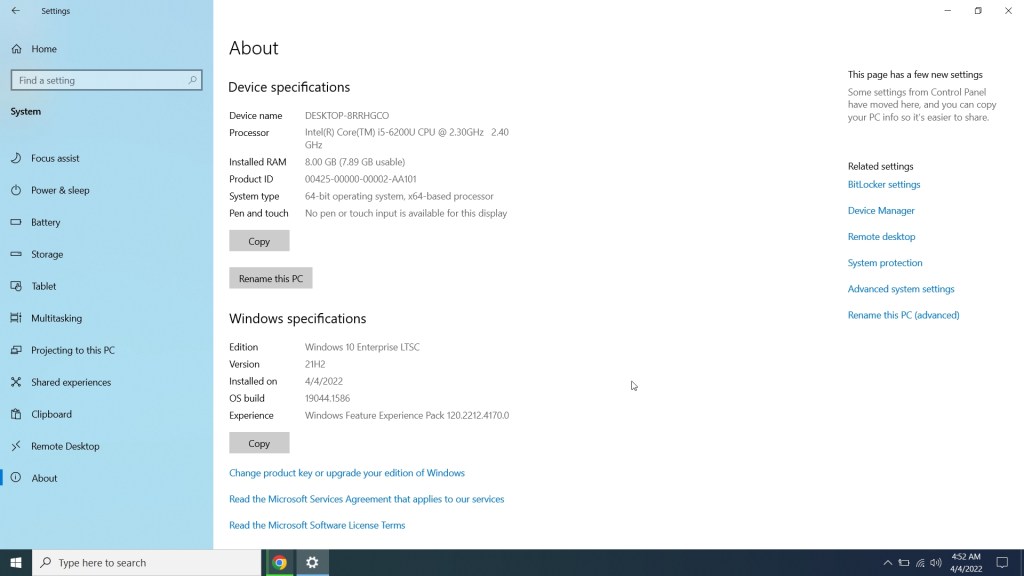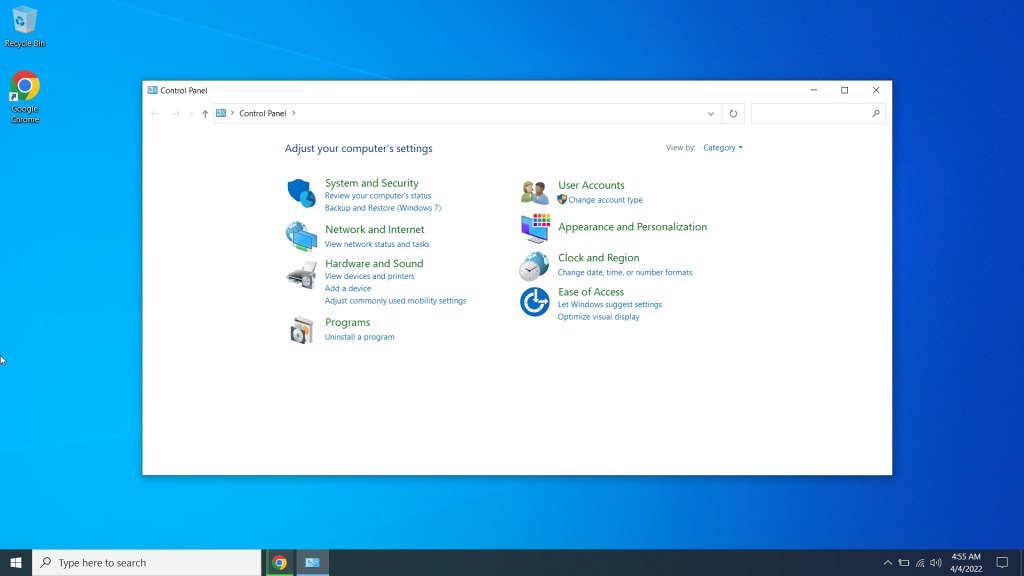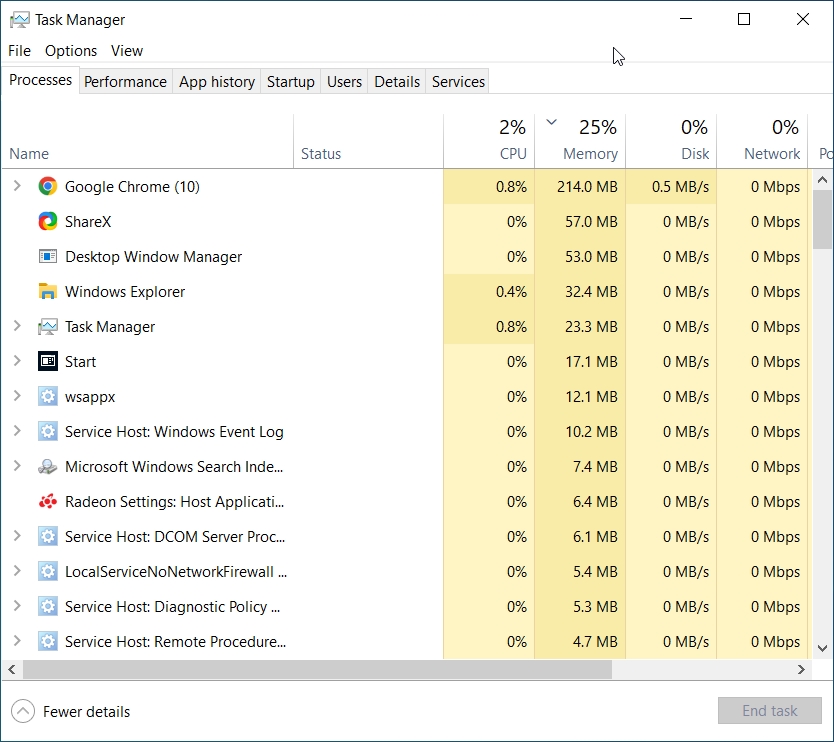- Tiny10 is a stripped-down Windows 10 that requires less than half of Windows 10's recommended system resources.
- Tiny10 is a custom Windows 10 ISo; Hence, we don't recommend using it as your daily driver.
- Its installation is similar to Windows 10. It has next to no Windows bloatware and services taking up your CPU resources.
It’s great that Windows 11 is feature-rich and a much more modern take on operating systems, although there are several UI inconsistencies that Rectify11 tries to fix. However, you cannot escape the sluggish Windows experience, especially if you’re running a fairly old machine. Both Windows 10 and 11 are bloated with too many features, unnecessary apps, and redundant background services and that’s the reason Tiny10 exists. It’s a lightweight take on Windows 10, takes much less space, works on computers with lower memory, and comes with no bloatware. To find out what is Tiny10 and how to install it, keep reading.
Let’s highlight everything about Tiny10 and how its lightweight nature differs from vanilla Windows 10 installation. In the end, let’s look at how to install Tiny10 on any PC (both 32-bit and 64-bit). A brief hands-on impression is waiting for you at the end.
Note This guide is for educational puroses and we do not promote Tiny10 / Tiny11 or appreciate people to switch to a custom Windows 10/11 version. Tiny10/11 is a closed piece of software and we don’t know what truly lies in the code of the same. Hence we strongly recommend not using it as your daily driver and have your personal files and accounts in it.
What is Tiny10?
Tiny10 is a stripped-down version of Windows 10, and it’s developed by NTDEV. The project aims to remove all the unnecessary Windows components to debloat it and make the experience smoother. In fact, the developer claims that Tiny10 not only removes the bloatware but is also optimized from the ground up to reduce Windows 10’s overall size.
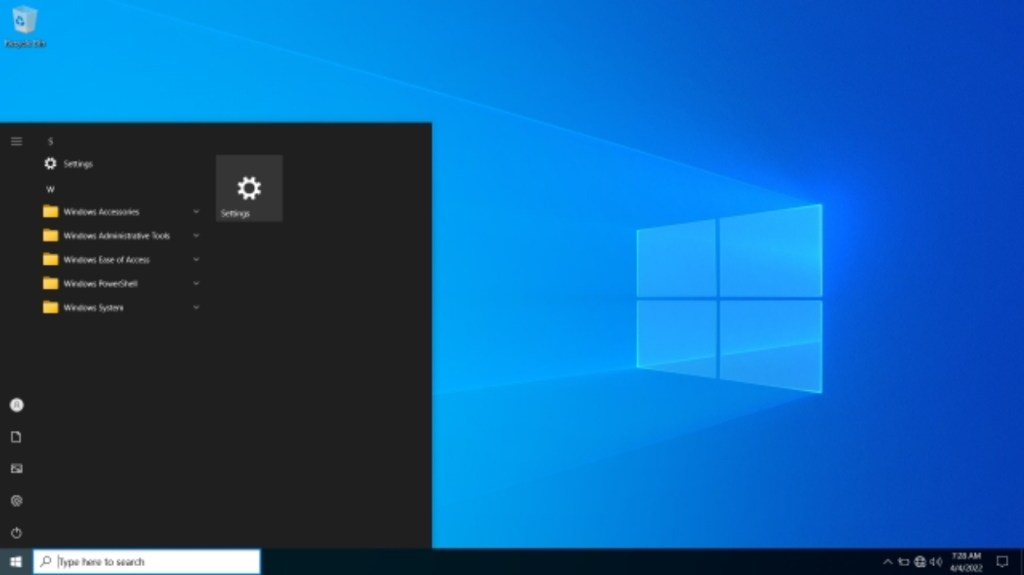
For example, if you install Tiny10 on a 32-bit system, it only takes 5.2GB of disk space compared to the vanilla Windows 10 system, which takes up to 22GB of space. That’s a 17 GB size reduction and it’s significant. On 64-bit systems, Tiny10 takes up to 10GB of disk space. In terms of RAM, you can run Tiny10 on a 32-bit system with 1GB of RAM, and a 64-bit system with 2GB of RAM. In comparison, a vanilla Windows 10 installation struggles to run on a system with 4GB of RAM.
But how does Tiny10 achieve this? We extensively tested Tiny10, in a Virtual Machine of course, and everything worked fine. All the core Windows system tools are available, including PowerShell, CMD, Disk Management, etc. We also ran several applications, including Geekbench, Crystaldisk, ShareX, and games like CS: GO, and everything ran without any issues. Functionality-wise, it is pretty much identical to a vanilla installation.
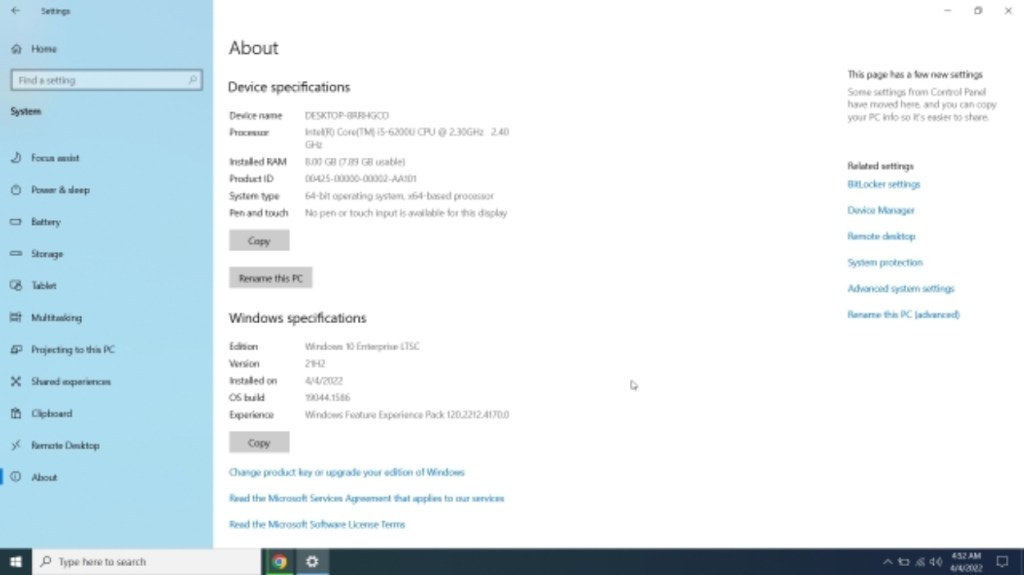
As for the apps, Tiny10 gets rid of all the default apps like the Image Viewer, Edge, Media Player, etc. Only Notepad and Wordpad are available on this stripped-down build of Windows 10. Tiny10 does not come with Microsoft Store or Windows Security.
There’s no support for Windows Subsystem for Linux, but you can enable Hyper-V. There are two Tiny Windows versions Tiny10 and Tiny11. Tiny10 has been discontinued but Tiny11’s development is up and running.
Tiny10 is good but it comes with its risks. Running a lightweight Windows 10 on a low-end PC with little disk space and RAM has been a dream for many, but that dream is not worth chasing for the cost of your privacy and data security. Hence, we’d recommend Chrome OS Flex. Although it does not support full-fledged Windows apps yet, it’s the best lightweight option for aging PCs. Google is no good when it comes to privacy but it’s the better of two evils.
Differences Between Tiny10 and Windows 10
To get started, Tiny10 is faster and more responsive compared to vanilla Windows 10. There is next to zero bloatware as all of it, unnecessary apps, services, and system components have been removed by the developer. Here’s a side-by-side comparison of the number of apps in the start menu.


Tiny10 also takes up very little disk space in comparison to Windows 10. On my 64-bit laptop, the Tiny10 installation took only 10.5GB of space, whereas Windows 10 ballooned to 22.2GB after a fresh installation.
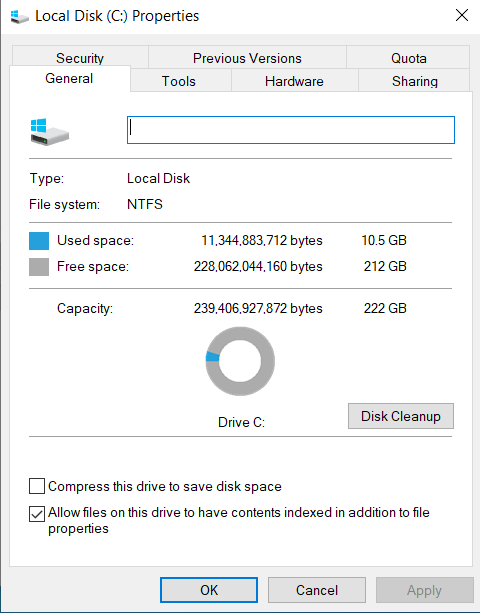

I also kept a keen eye on the CPU and RAM usage on Tiny10, and surprisingly, it was merely taking 1% of CPU and 1.6GB of RAM in idle. In comparison, Windows 10 kept its CPU usage in check, but RAM usage was constantly above 2.5GB. Here’s the Task Manager overview of Tiny10 and Windows 10.

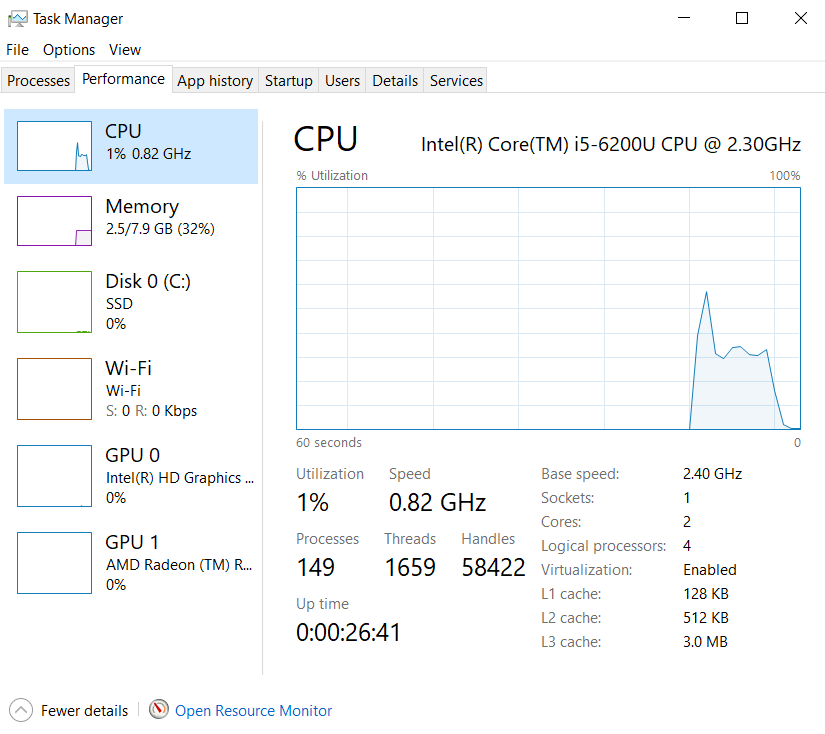
Coming to some benchmark testing between Tiny10 and vanilla Windows 10, here are some Geekbench and CrystalDiskMark results. In the Geekbench test, both OSes performed along the same lines, but in the CrystalDiskMark test, we can see that Tiny10 was able to write data at double speeds, probably because the disks were already in use by various apps on vanilla Windows 10.

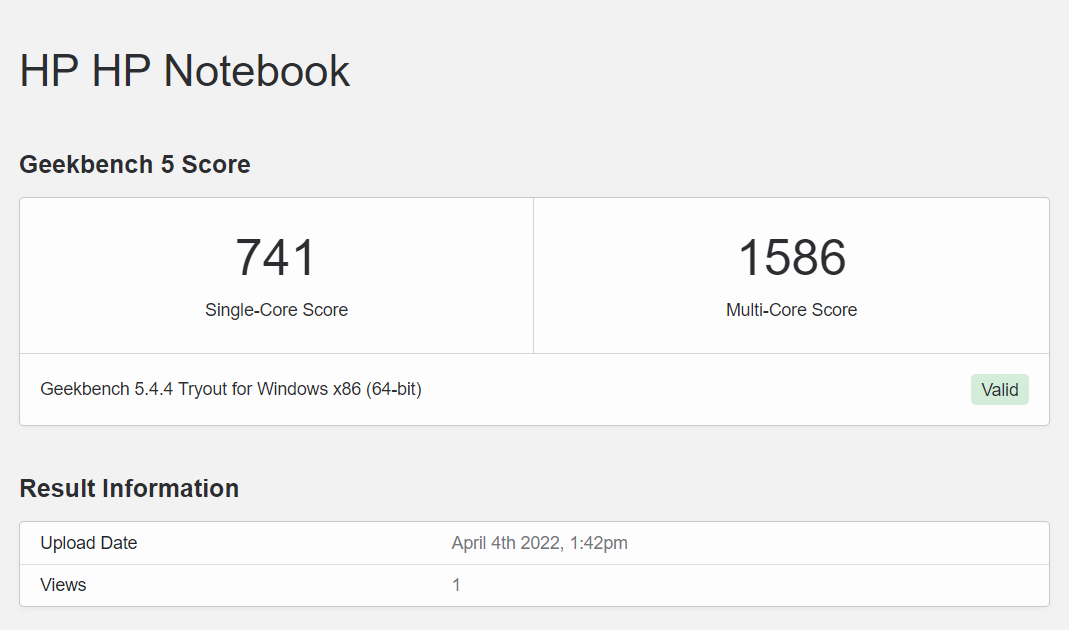
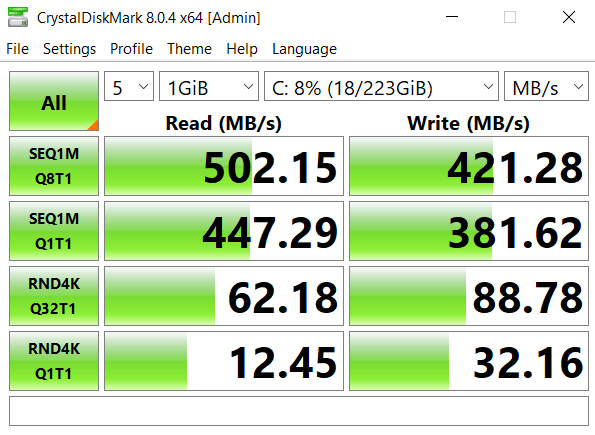

Finally, I also installed Steam and played CS: GO at high settings on Tiny10, and it performed decently on my 6th Gen i5-powered laptop. I got around 20-30FPS, which isn’t a huge difference from vanilla Windows 10 installation.

How to Install Tiny10 (Stripped Down Windows 10)
- Download the ISO image of Tiny10 based on your system architecture.
- Download Rufus to create a bootable USB drive from this link.
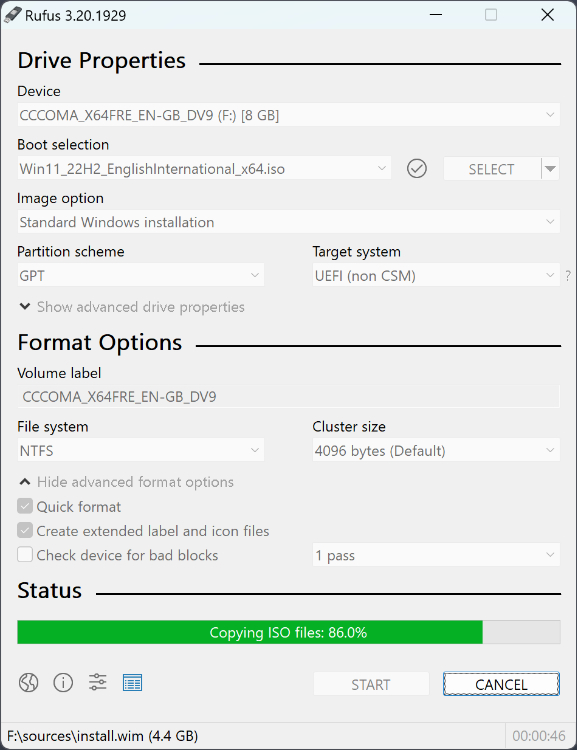
- Open Rufus -> plug in a USB drive of at least 16 GB -> select the ISO image -> click “Start”. Make sure the File system is NTFS.
- While the flashing process completes, get to downloading a browser because you don’t get any in Tiny10.
- Next, plug the USB drive into the target PC and restart it. When the PC restarts, press the key for boot options (should be one of the function keys, i.e. F9, F8, F7, F11, F12, etc.). Once you are on the boot selection screen, select your USB drive and hit Enter.
Note:
If you don’t know the boot key for your PC or laptop, look it up for your make on the internet or visit your manufacturer’s website to find the answer.
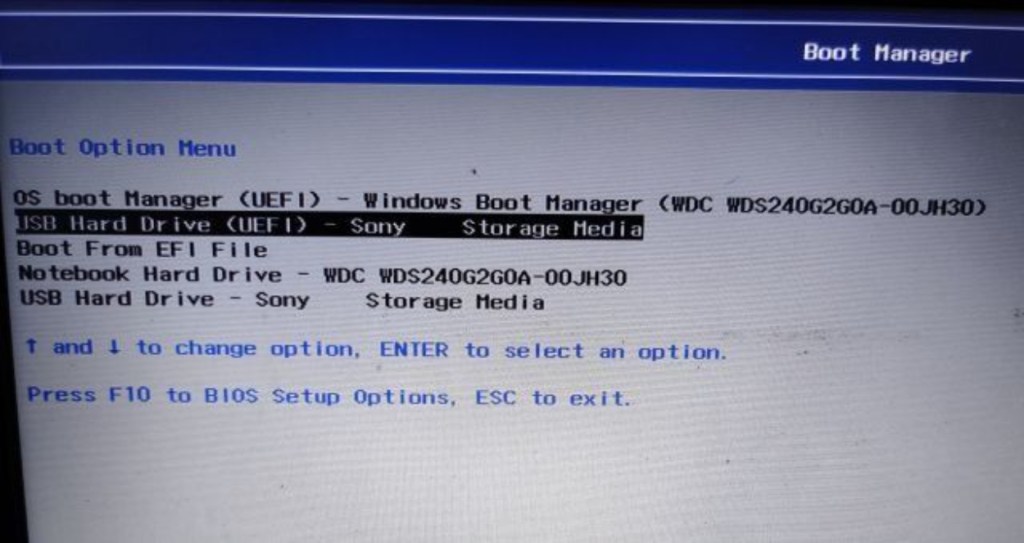
- Your PC will now load Tiny10’s installation window, which is similar to Windows 10’s setup window. Follow the on-screen instructions and choose your preferred drive.
- Finally, click on “Next” to install the OS. Once the installation is complete, you will boot into Tiny10.
Tiny10: First Impressions
We used Tiny10 for plenty of different tasks, from playing games like CS: GO to enabling Hyper-V and everything works as intended. The CPU and RAM usage were in check and it was fast, stable, and responsive.
The Start menu opens up in a jiffy. There is no Bing search embedded in the search bar so search results are fast, no telemetry in the background, and no weird services raking disk usage to 100%. It’s overall a smooth and pleasant experience. Tiny10Edit does what it advertises but we still don’t recommend using it as your daily driver due to potential security concerns.
And that was everything you need to know about Tiny10 and its installation. Tiny10 offers support for 32-bit systems, which means older hardware can benefit from this project. We hope Microsoft, in the future, releases a lightweight Windows 11 as the same will tremendously help users running laid-back hardware. If you want to debloat Windows 11 and speed up your Windows 11 PC, follow our linked tutorials. If you have any questions, let us know in the comments section below.
While we’re not 100% sure about its safety, at the end of the day it’s developed by a completely anonymous developer. It could have key-loggers in the install files, which pose a threat to user privacy and security. Hence, it’s not safe to install Tiny10 and use it as your daily driver.
No, Tiny10 is not an open-source project.
No, Tiny10 is an independent project, and it’s been developed by a developer named NTDEV.
The 64-bit ISO image of Tiny10 takes up to 2.4GB of space, and the 32-bit image is around 1.7GB in size.
Yes, Tiny10 is supported on 32-bit computers.

